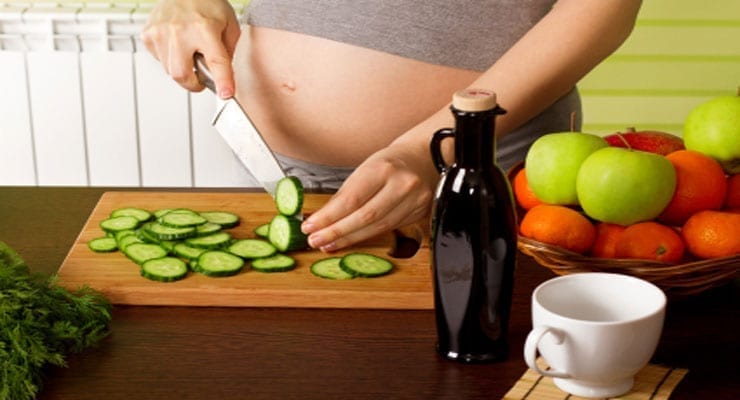One of the most pressing issues for pregnant women today is diet and nutrition. With the availability of pre-processed foods and fast-food restaurants, it’s easy to unconsciously do harm to oneself by making poor food choices.
It is a well-known fact that a significant percentage of the foods that we eat (especially the processed food items that are easily available on any store shelf) are not really healthy. The human body has increased nutritional requirements during pregnancy and if you don’t give the body what it needs during this crucial period, the risk for pregnancy-related problems increases.
How to Make Meals Healthier
Good nutrition during pregnancy starts with being more selective with what you put into your daily meals. It’s easy to fall into the habit of using too much salt or fat (i.e. butter) when cooking. The following guidelines will help you quell bad cooking habits and develop better ones:
1. If a recipe calls for cheddar cheese, parmesan cheese, or any other cheese, take the amount in the recipe and reduce it by 50%. That’s 50% fewer calories from fat but you’ll still be getting calcium and other essential nutrients from the cheese.
2. If a recipe calls for granulated sugar or confectioner’s sugar, reduce the actual amount that you put into the food by 25% to 50%. The resulting food will be less sweet, but mild sweetness is better than excess sugar, which can lead to gestational diabetes (if you eat lots of sugar during your pregnancy).
3. Do you have a love affair with the salt shaker? Don’t – because excess salt in the body can increase the risk for fluid retention and high blood pressure. If you have to cook with salt, reduce the amount of salt you use by 50%. If a recipe calls for 1 teaspoon of salt, add only a 1/2 teaspoon. Adjust the taste of the dish by adding spices instead. Spices not only taste good, but some spices actually contain essential nutrients such as choline, which is good for your baby’s brain development.
4. The easiest way to add flavor to a dish is by adding spice to it. Salt is actually a weak seasoning because you need to add so much of it to flavor an entire dish. It’s different when you flavor meats and vegetables with a variety of spices. The dish will have a stronger flavor, overall. If spices don’t work, use vinegar or citrus juices instead.
5. Vegetables are one of the cheapest and easiest sources of vitamins, minerals, and dietary fiber. Why deprive yourself of such a bounty of essential nutrients? You won’t have to because from now on, you can start doubling the amount of vegetables that you add to your dishes. For example, if a dish calls for one medium-sized potato and a cup of green peas, you will add two medium sized potatoes and two cups of green peas. Of course, the additional ingredients may warrant more flavoring (read: spices, not salt), but in the end, you have more vegetables to eat.
Remember, there are no restrictions when it comes to chowing down on vegetables!
This article is not intended as medical advice, and this information should not be used in place of the advice of your physician or other qualified healthcare provider.





